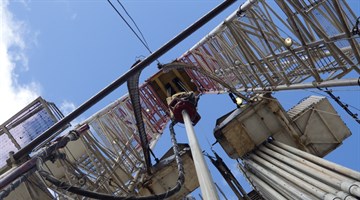TOMSK, Oct 16 –
RIA Tomsk. Employees of TSU High-Energy and Special
Materials Research Laboratory developed technology for "slippery ceramics”
(aluminum-magnesium-boron alloy) synthesis, which was produced in the USA; new
material can be used in mechanical engineering, aircraft manufacturing,
household appliances production, the university’s press service said on
Wednesday.
It is specified
that "slippery ceramics" with an extremely low coefficient of
friction are mainly obtained in the USA. By reducing friction, it can reduce
the noise level of any pump. The material is used in mechanical engineering,
aircraft manufacturing, domestic sphere. Refrigerators, air conditioners and
other equipment become not only silent, but also more durable and energy efficient.
"At a
scientific conference, I heard about the aluminum-magnesium-boron (AlMgB14)
compound, which no one does in Russia. It has a unique property – it is
self-lubricating, since its friction coefficient is 2 times less than that of
Teflon. At the same time it has an abnormal hardness of 32 gigapascals ... We
made samples with 97% of AlMgB14 and 3% of impurities", – the press
service quotes the developer of the project Ilya Zhukov, Tomsk State University
(TSU) postgraduate student.
According to him,
Tomsk State University (TSU) materials scientists have developed their own
methodology for the synthesis of "slippery ceramics” and unique powders
that serve as sources for the synthesis of AlMgB14. At the next stage,
supported by a grant from the Russian Science Foundation, researchers will seek
maximum smoothness of the material.
© РИА Томск. Яков Андреев
"We will
check the mechanical properties of the alloy, friction coefficient and reduce
porosity. The problem of all ceramics is that it is porous. It is very
difficult to make it non-porous, but it will help to increase the
physicomechanical properties of ceramics (increase hardness and reduce the
coefficient of friction). We need to work with the original powders", – explains
Zhukov.
In addition,
researchers intend to use spark plasma sintering methods. In theory, this
should lead to the creation of a non-porous "slippery ceramic”. The
co-executors of the project are the St. Saint Petersburg State Institute of
Technology and Nizhny Novgorod Research Institute of Physics and Technology.